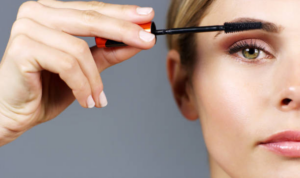Dealing with hair bumps on the private area is a common yet embarrassing problem for many. Hair bumps, also known as razor bumps or ingrown hairs, occur when hair curls back or grows sideways into the skin, causing inflammation. Fortunately, there are several ways to treat and prevent these unsightly and often uncomfortable bumps. This article delves into understanding hair bumps, preventative techniques, home remedies, and when to seek professional help, ensuring your skin stays smooth and bump-free.
Understanding Hair Bumps
What Are Hair Bumps?
Hair bumps are small, inflamed swellings that often appear after hair removal. These bumps can be itchy, tender, and unsightly. They are also known as pseudofolliculitis barbae when occurring in the beard area of men but can affect any area where hair is removed, including the private parts. Understanding that they are a natural skin response to the irritation or infection caused by hair removal is crucial in seeking the right treatment and prevention.
Common Causes of Hair Bumps
Hair bumps can be caused by a number of factors, including:
- Coarse or Curly Hair: Naturally curly or coarse hair is more prone to curl back and re-enter the skin after being cut.
- Improper Shaving Techniques: Using a dull blade, shaving too closely, or shaving without proper lubrication can irritate the skin and increase the risk of hair bumps.
- Friction from Clothing: Tight clothing can cause friction and sweat, both of which can contribute to the development of hair bumps.
- Clogged Pores: Dead skin cells can clog pores and trap shaved hairs beneath the skin surface, leading to inflammation.
Understanding these causes is the first step towards preventing hair bumps in the future.

Preventative Measures
Proper Shaving Techniques
Adopting proper shaving techniques is key to preventing hair bumps:
- Use a sharp, single-blade razor.
- Wet your skin with warm water and use a lubricating gel.
- Shave in the direction of hair growth, not against it.
- Rinse the razor after each stroke.
- Avoid stretching the skin while shaving.
Implementing these steps can significantly reduce the risk of developing hair bumps.
Appropriate Hair Removal Methods
Not all hair removal methods are equally beneficial for avoiding hair bumps. Here are considerations when selecting an appropriate method:
- Waxing: Can pull the hair from the root and potentially reduce the occurrence of hair bumps, but it must be done with caution to prevent skin damage.
- Depilatory Creams: May provide a less abrasive alternative to shaving, but test for skin sensitivity beforehand.
- Laser Hair Removal: Offers a more permanent solution but requires multiple sessions and can be costly.
Skincare Before and After Hair Removal
A proper skincare routine before and after hair removal can keep hair bumps at bay:
- Exfoliate: Gently exfoliate the skin before hair removal to remove dead skin cells and free trapped hairs.
- Moisturize: Apply a hydrating moisturizer after hair removal to soothe the skin and reduce irritation.
Remember, maintaining an effective skincare routine is essential in hair bump prevention.
| Skincare Step | Benefit |
|---|---|
| Gentle Exfoliation | Removes dead skin, frees hairs |
| Hydration | Soothes skin, reduces irritation |
| Use of Aftershave | Disinfects and calms the skin |
Home Remedies for Treating Hair Bumps
Natural Exfoliants and Scrubs
Using natural exfoliants and scrubs can help remove dead skin cells that trap hairs. A homemade sugar scrub, for instance, can gently exfoliate the skin without harsh chemicals. Combine sugar with a carrier oil like coconut or olive oil, and apply it to the affected area in a circular motion. Rinse off with warm water. This natural remedy not only unclogs pores but also smoothens the skin, reducing the chance of new hair bumps forming.
Soothing Agents and Aloe Vera
Aloe Vera is renowned for its soothing and anti-inflammatory properties, making it an excellent remedy for hair bumps. Application of pure Aloe Vera gel to the irritated area can reduce redness and swelling, speeding up the healing process. For an added cooling effect, you can refrigerate the gel before application. Repeated use of this natural soothing agent can provide relief and also prevent potential infections from developing into more serious complications.
Essential Oils and Their Benefits
Some essential oils have antiseptic and anti-inflammatory properties that can be beneficial in treating hair bumps. For example:
- Tea tree oil can disinfect and reduce swelling.
- Lavender oil can soothe the skin and accelerate healing.
Mix a few drops of essential oil with a carrier oil before applying it directly to the skin to avoid irritation. Consistent use of these natural oils can greatly alleviate discomfort caused by hair bumps.

Over-the-Counter Solutions and Medical Treatments
Recommended Topical Creams
For those looking for over-the-counter (OTC) solutions, topical creams containing ingredients like salicylic acid or benzoyl peroxide can help. These active ingredients exfoliate the skin, prevent clogged pores, and have antibacterial properties. It’s important to follow the instructions on these products to prevent skin irritation.
When to See a Doctor
If your hair bumps are persistent, increasingly painful, or showing signs of infection (such as pus or severe redness), it’s time to see a doctor. They might prescribe antibiotic creams or oral antibiotics to treat any infection and recommend steroid creams to reduce inflammation.
Professional Hair Removal Options
When home remedies and OTC products do not provide relief, professional hair removal methods may be the answer. Laser hair removal and electrolysis are long-term solutions that can reduce the occurrence of hair bumps. It’s vital to seek these treatments from certified professionals to minimize risks and get the best results.
Lifestyle Changes and Tips for Long-term Management
Adjustments in Clothing and Personal Hygiene
Making simple adjustments in your personal hygiene and clothing choices can help manage hair bumps over the long term:
- Opt for loose-fitting clothing made from breathable fabrics to reduce friction.
- Maintain a high level of personal hygiene to prevent bacterial growth and infection.
Diet and Hydration for Skin Health
A well-balanced diet rich in vitamins and minerals supports overall skin health. Staying hydrated ensures your skin is less prone to irritation and can heal more quickly from hair bumps.
Stress Management Techniques
High stress can negatively impact your skin, making it more sensitive to issues like hair bumps. Techniques such as yoga, meditation, or regular exercise can be effective in managing stress levels, promoting healthier skin.

Conclusion
Hair bumps in the private area are a nuisance but can be managed with the right knowledge and care. Whether you choose home remedies, lifestyle adjustments, or professional treatments, making informed decisions about skincare will lead to clearer, healthier skin. Always consider the root cause of your hair bumps to apply the most impactful solution.
FAQs
- How long do hair bumps last? Hair bumps can last anywhere from a few days to a few weeks, depending on the severity and if they become infected. With proper treatment, they should resolve within a week.
- Can I just pop hair bumps? It’s not recommended to pop hair bumps as this can lead to infection and scarring. Instead, use a warm compress to soothe the area and consult a doctor if necessary.
- Is it safe to shave over hair bumps? Shaving over hair bumps can exacerbate the problem and lead to further irritation. It’s best to wait until the bumps have healed before shaving again.
- Can hair bumps lead to more serious skin conditions? If left untreated, hair bumps can become infected, leading to more serious skin conditions like folliculitis. Consult a doctor if you see signs of infection.
- How can I prevent hair bumps after waxing? To prevent hair bumps after waxing, avoid tight clothing, keep the area clean, exfoliate regularly, and consider using a post-waxing product designed to prevent ingrown hairs.



